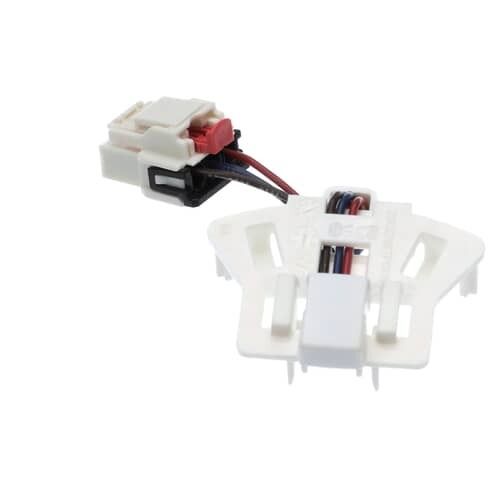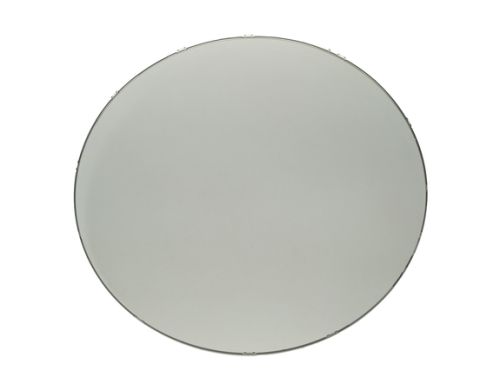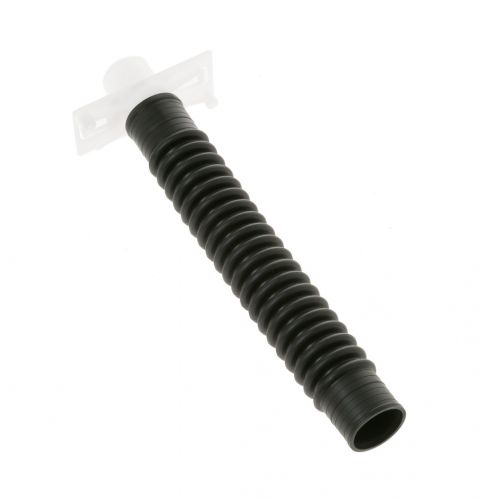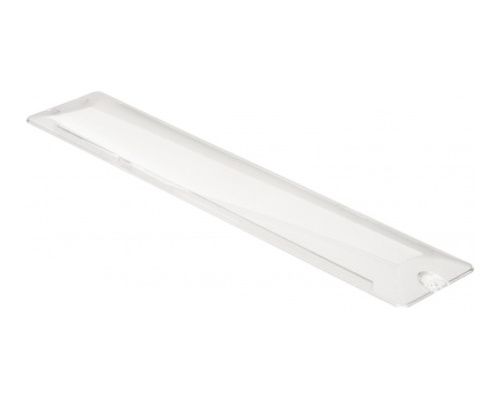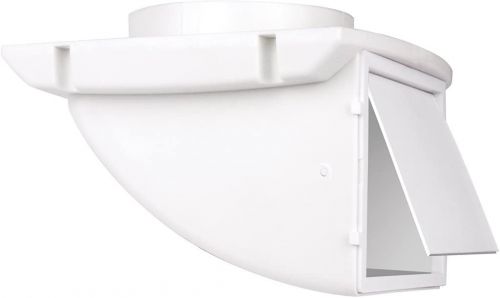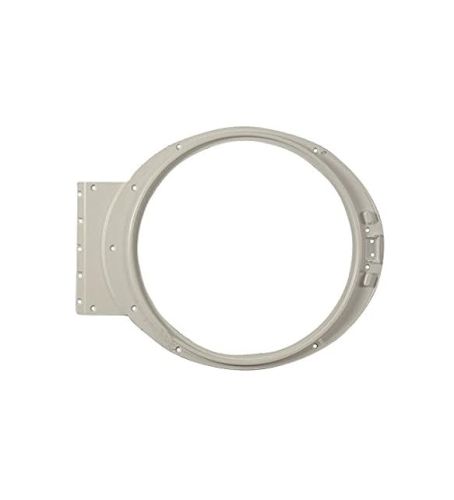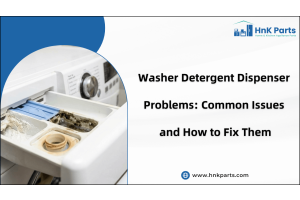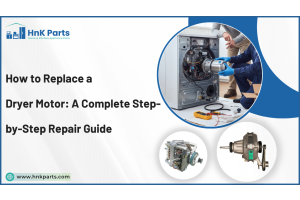
How to Replace Heating Element in Whirlpool Dryer
Ever found yourself amid laundry day only to discover that your Whirlpool dryer isn't heating as it should? Fret not, as a likely culprit could be a faulty heating element. In this comprehensive guide, we will unravel the mystery of a malfunctioning Whirlpool dryer and walk you through the step-by-step process of replacing the heating element. From understanding the signs of a worn-out heating element for a Whirlpool dryer to procuring the necessary tools, this article aims to empower you with the knowledge and confidence needed to restore your dryer's functionality.
Where Is the Heating Element on a Whirlpool Dryer
The whirlpool dryer heating element location is a critical component to identify when troubleshooting issues related to heating problems in your dryer. Typically, the whirlpool heating element location is found within the back panel of the dryer or sometimes within the front panel, depending on the specific model. Once exposed, you'll likely identify a metal housing containing the heating element coils. These coils, resembling a spring-like structure, are what produce the heat required for drying. Familiarizing yourself with the location of the heating element is a pivotal first step in troubleshooting and, if needed, replacing this integral part to ensure optimal dryer performance.
Is it worth replacing a heating element in a Whirlpool dryer?
Several factors determine whether to replace the heating element in a Whirlpool dryer. Replacing the heating element is a cheaper option than buying a new appliance if your dryer is relatively new and the heating element is the only issue. Also, if your dryer model is known for its durability and has served you well, it is wise to replace the heating element. If your dryer is old and other components are wearing out, it may be more practical to buy a new unit. Decide if a new energy-efficient model makes sense or if the existing dryer’s condition can be repaired at a price lower than the value of buying a new one.
Know more about How To Clean A Dryer Vent Yourself: Inside & Outside
How do I know if my Whirlpool dryer heating element is bad?
A malfunctioning dryer heating element can throw a wrench into your daily routine, causing frustration and inconvenience. One of the common issues that can plague a Whirlpool dryer is a faulty heating element. If you suspect that your Whirlpool dryer is not working as it should, it's essential to troubleshoot the heating element to determine whether it's the culprit. Identifying when you need a Whirlpool dryer heating element replacement can be easy with these signs and steps.
-
Whirlpool dryer not heating: One of the primary indicators of a faulty heating element is the dryer's inability to produce enough heat. If you find that your clothes are consistently damp or take an unusually long time to dry, it may be a sign that the heating element is not functioning at its optimal capacity. Before jumping to conclusions, make sure to check other potential causes, such as clogged vents or a malfunctioning thermostat.
-
Visual inspection: Performing a visual inspection is a straightforward way to identify potential issues with the Whirlpool dryer heater element. Start by unplugging the dryer and locating the heating element, usually found at the back or beneath the drum, depending on the model. Examine the element for any visible signs of damage, such as burns, breaks, or discoloration. If you notice any of these issues, there's a high likelihood that the heating element is at fault.
-
Noisy operation: A malfunctioning heating element may produce unusual noises during the drying cycle. If you hear strange sounds, such as rattling or thumping, it could indicate that the heating element is loose or damaged. This is often a result of the internal coils or other components breaking down. While not exclusive to heating element issues, unusual noises warrant a closer inspection to determine the root cause.
-
Faulty dryer thermostat: Heating elements, which are important Whirlpool parts, may occasionally be symptomatic rather than the cause of a problem. The thermostat regulates the temperature inside the dryer, and if it fails, it can lead to inadequate heat. Before replacing the heating element, it's advisable to check the thermostat to rule out any secondary problems.
-
Electrical testing: For a more accurate diagnosis, consider using a multimeter to test the continuity of the heating element. Unplug the dryer and disconnect the heating element. Set the multimeter to the ohms setting and touch the probes to the terminals of the heating element. If the multimeter shows infinite resistance, it indicates a break in the circuit, confirming a faulty heating element.
-
Burning smell: A burning smell emanating from the dryer is a red flag that should not be ignored. It could signify overheating due to a malfunctioning heating element. In such cases, it's crucial to address the issue promptly to prevent potential fire hazards.
Changing Heating Element in Whirlpool Dryer
Heating elements are dryer parts that can have a significant impact on the efficiency of your Whirlpool dryer if they are malfunctioning. If you've identified the issue and need to replace the heating element, follow these step-by-step instructions to ensure a smooth and successful whirlpool front load dryer heating element replacement
-
Safety first: Before starting any repairs, ensure the dryer is unplugged from the power source. Safety should always be a top priority. Additionally, consider wearing protective gear, such as gloves and safety goggles.
-
Access the heating element: Open the dryer door and locate the screws securing the dryer's front panel. Use a screwdriver to remove these screws and carefully lift off the front panel. This will grant you access to the heating element.
-
Disconnect wires: Take note of the wiring connected to the heating element. Use a marker or take a picture to remember the proper connections. Carefully disconnect the wires, ensuring you don't damage them in the process.
-
Remove the old heating element: Once the wires are disconnected, you can now remove the faulty heating element. Most Whirlpool dryers have a mounting bracket holding the element in place. Remove any screws or clips securing the element and gently pull it out.
-
Install the new heating element: Place the new heating element in the same position as the old one. Secure it with the mounting bracket and screws or clips. Reconnect the wires according to the markings or reference picture you took earlier.
-
Reassemble the dryer: With the new heating element in place, reattach the front panel and secure it with the previously removed screws. Ensure all components are properly aligned and tightly secured.
By following these steps, you should be able to replace Whirlpool dryer heating element effectively. If you encounter any difficulties or are unsure about any step, it's advisable to consult the appliance's user manual or seek professional assistance.
Learn how to install a dryer vent properly to ensure optimal airflow and reduce the risk of lint buildup, enhancing the efficiency and safety of your laundry appliances.
Whirlpool Dryer Heating Element Test
After changing the heating element in the dryer, thorough testing is crucial to ensure optimal performance. Here is how to test the new heating element in the dryer:
-
Power on and observe: Turn on the dryer and carefully observe the heating element during its initial cycle. Ensure there are no unusual sounds or odors.
-
Consistent heat output: Monitor the dryer's performance to verify a consistent and steady heat output. The temperature should rise as expected, indicating proper functioning.
-
Check for hot airflow: Feel the airflow from the vent. It should be hot, confirming that the heating element is effectively generating heat and transferring it to the air circulating inside the dryer.
-
Drying time: Run a load of laundry to test the drying time. The clothes should dry within a reasonable timeframe, indicating that the heating element is contributing to efficient drying.
-
No overheating: Keep an eye on the temperature to ensure it doesn't exceed normal levels. Overheating may indicate a faulty thermostat or other issues that need attention.
-
Monitor for consistency: Run the dryer through multiple cycles to confirm the heating element's consistent performance. This step ensures long-term reliability.
Know more about Samsung Dryer Not Heating: 9 Troubleshooting Tips
How Long Does a Heating Element Last in a Dryer
The lifespan of a whirlpool dryer heating element:
-
Typically lasts 5 to 15 years
-
Lifespan depends on usage, maintenance, and wear
-
Frequent use or heavy loads can cause faster failure
Whirlpool Dryer Heating Element Cost
Cost of a whirlpool dryer heating element:
-
Price range: $30 to $100
-
Factors affecting cost: model, retailer, new vs. refurbished
-
Check authorized Whirlpool dealers, online retailers, and local repair shops for exact pricing
Whirlpool dryer heating element troubleshooting tips
If your Whirlpool dryer is experiencing heating issues, consider these troubleshooting tips to identify and address the problem:
-
Check power supply: Ensure the dryer is properly plugged in and receiving power. A tripped circuit breaker may be the culprit.
-
Inspect heating element: Examine the heating element for visible signs of damage, such as broken coils. Replace it if any defects are found.
-
Thermostat examination: Test the thermostat for continuity using a multimeter. A malfunctioning thermostat can disrupt the heating process.
-
Ventilation inspection: Clear any lint or debris from the dryer vents and ducts. Restricted airflow can hinder heating efficiency.
-
Timer and controls: Ensure the timer and control settings are accurate. Faulty controls may lead to inadequate heating.
By systematically addressing these factors, you can troubleshoot and resolve heating element issues in your Whirlpool dryer, restoring efficient operation.
Dryer heating element maintenance tips
To prolong the life and efficiency of your dryer's heating element, follow these maintenance tips:
-
Cleaning: Clean the interior of the dryer as well as the lint trap. The heating element can overheat as a result of the buildup of lint, which impedes airflow.
-
Check on ventilation: The dryer vents and ducts should not be obstructed. Optimal heating performance is promoted by proper ventilation.
-
Inspect wiring: Periodically check the wiring connected to the heating element for signs of wear or damage. Replace any frayed wires promptly.
-
Avoid overloading: Overloading the dryer can strain the heating element. Opt for smaller, well-distributed loads to prevent excessive wear.
-
Timely repairs: Address any heating issues promptly. Ignoring problems can lead to further damage and decreased efficiency.
-
Maintenance: Have scheduled professional inspections to discover and stop any heating element problems from becoming more serious.
Learn how to clean a dryer effectively to improve its performance and prevent potential fire hazards caused by lint buildup.
Replacing the heating element for the Whirlpool dryer is a manageable task that can restore its functionality efficiently. By adhering to the outlined steps, prioritizing safety, and conducting thorough testing, you can successfully install a new heating element and revive your dryer's performance. Remember to follow manufacturer guidelines, consult the user manual if needed, and seek professional assistance if uncertainties arise. With proper care and maintenance, your Whirlpool dryer will continue to provide reliable and efficient service for years to come. Looking for Whirlpool dryer parts? HNK Parts has you covered with a comprehensive selection of high-quality components to keep your dryer running smoothly. Whether you need a new heating element, thermostat, or replacement belts, we offer genuine Whirlpool dryer parts that ensure durability and compatibility.
FAQs
How much does it cost to replace a heating element in a Whirlpool dryer?
The cost to replace the heating element in the dryer typically ranges from $100 to $200, including parts and labor.
Is it cheaper to fix a dryer or buy a new one?
Whether it's cheaper to fix a dryer or buy a new one depends on the extent of the issue. In many cases, repairing the heating element is more cost-effective than purchasing a new dryer.


